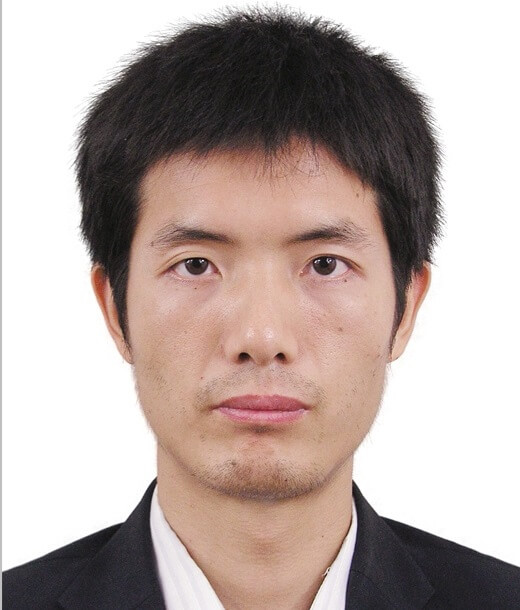Novel Techniques for Removal of Dyes from Wastewater: A Review

DOI:
https://doi.org/10.54060/a2zjournals.jase.90Keywords:
Detoxification, Effluents, Remediation, DetrimentalAbstract
Dyes are extensively used to color products across various industries, including textiles, leather tanning, cosmetics, and pigments. The textile sector alone accounts for approximately 14% of India’s total industrial production, contributing around 4% to the nation’s GDP and generating about 27% of its total foreign exchange earnings. However, the discharge of effluents from these industries poses significant environmental and health risks. In India, textile industries consume over 100 liters of water to process just 1 kg of textiles, which has led to the contamination of surface and groundwater resources in several regions. To mitigate the detrimental impact of dyeladen wastewater on human health and ecosystems, effective treatment is essential before effluents are discharged into water bodies. Consequently, the removal of dyes from wastewater has gained considerable attention in recent years due to the harmful, often carcinogenic, effects of untreated textile effluents. Dye removal from wastewater can be accomplished using a range of physicochemical or biological methods. This paper reviews existing literature on the importance of remediation technologies aimed at efficiently removing textile dyes from industrial effluents, with a focus on improving fragile ecosystems worldwide.
Downloads
References
T. Seow and C. K. Wee, “Removal of dye by adsorption: a review,” International Journal of Applied Engineering Re-search, vol. 11, no. 4, pp. 2675–2679, 2016.
N. Nippatla and L. Philip, “Electrocoagulation-floatation assisted pulsed power plasma technology for the complete mineralization of potentially toxic dyes and real textile wastewater,” Process Saf. Environ. Prot., vol. 125, pp. 143–156, 2019.
M. Kobya, E. Demirbas, E. Senturk, and M. Ince, “Adsorption of heavy metal ions from aqueous solutions by activated carbon prepared from apricot stone,” Bioresour. Technol., vol. 96, no. 13, pp. 1518–1521, 2005.
R. Aplin and T. D. Waite, “Comparison of three advanced oxidation processes for degradation of textile dyes,” Water Sci. Technol., vol. 42, no. 5–6, pp. 345–354, 2000.
A. P. Zoheb, M. Mathew, J. Grahn, and K. Mouzon, “Nanoporous membranes with cellulose nanocrystals as functional entity in chitosan: removal of dyes from wa-ter,” Carbohydrate polymers, vol. 112, pp. 668–676, 2014.
T. G. Southern, Technical solutions to the colour problem: a critical review, vol. 75. Bradford, 1995.
A. Lopes, S. Martins, A. Morao, M. Magrinho, and I. Goncalves, “Degradation of a textile dye CI Direct Red 80 by elec-trochemical processes,” Portugaliae Electrochimica Acta, vol. 22, pp. 279–294, 2004.
M. T. Yagub, T. K. Sen, S. Afroze, and H. M. Ang, “Dye and its removal from aqueous solution by adsorption: a re-view,” Adv. Colloid Interface Sci., vol. 209, pp. 172–184, 2014.
R. Kumar, J. Rashid, and M. A. Barakat, “Synthesis and characterization of a starch-AlOOH-FeS 2 nanocomposite for the adsorption of congo red dye from aqueous solution,” RSC advances, vol. 4, pp. 38334–38340, 2014.
M. Amin, A. Hafez, A. Shaaban, N. Abdelmonem, and M. Hanafy, “Removal of Reactive Dyes from Dye-house Effluent Using Nanofiltration Membrane,” Egypt. Soc. Chem. Eng, vol. 37, pp. 1–20, 2011.
E. Alventosa-Delara, S. Barredo-Damas, M. I. Alcaina-Miranda, and M. I. Iborra-Clar, “Ultrafiltration technology with a ceramic membrane for reactive dye removal: optimization of membrane perfor-mance,” Journal of Hazardous materi-als, vol. 209, pp. 492–500, 2012.
M. Khayet, A. Y. Zahrim, and N. Hilal, “Modelling and optimization of coagulation of highly con-centrated industrial grade leather dye by response surface methodology,” Chemical Engineering Jour-nal, vol. 167, no. 1, pp. 77–83, 2011.
A. R. Amani-Ghadim, S. Aber, A. Olad, and H. Ashassi-Sorkhabi, “Optimization of electrocoagulation process for re-moval of an azo dye using response surface methodology and investigation on the oc-currence of destructive side re-actions,” Chemical Engineering and Processing, vol. 64, pp. 68–78, 2013.
M. Kurnia, S. Suprapto, and Y. L. Ni’mah, “Bio-adsorbent for remazol brilliant blue R (RBBR) dye,” S. Afr. J. Chem. Eng., vol. 47, pp. 111–122, 2024.
T. Robinson, G. McMullan, R. Marchant, and P. Nigam, “Remediation of dyes in textile effluent: a critical review on current treatment technologies with a proposed alternative,” Bioresour. Technol., vol. 77, no. 3, pp. 247–255, 2001.
T. Panswad and W. Luangdilok, “Decolorization of reactive dyes with different mo-lecular structures under different environmental conditions,” Water Research, vol. 34, no. 17, pp. 4177–4184, 2000.
P. Frank and S. Villaverde, “Combined anaerobic-aerobic treatment of azo dyes-a short review of bioreactor stud-ies,” Water research, vol. 39, no. 8, pp. 1425–1440, 2005.
S. Mendes, M. P. Robalo, and L. O. Martins, “Bacterial enzymes and multi-enzymatic systems for cleaning-up dyes from the environment,” in Microbial Degradation of Synthetic Dyes in Wastewaters, Cham: Springer International Pub-lishing, 2015, pp. 27–55.
J. Plácido, X. Chanagá, S. Ortiz-Monsalve, M. Yepes, and A. Mora, “Degradation and detoxification of synthetic dyes and textile industry effluents by newly isolated Lepto-sphaerulina sp. from Colombia,” Bioresources and Biopro-cessing, vol. 3, pp. 1–14, 2016.
S. Datta, L. R. Christena, and Y. R. S. Rajaram, “Enzyme immobilization: an overview on techniques and support mate-rials,” 3 Biotech, vol. 3, no. 1, pp. 1–9, 2013.
M. M. Aldoury, M. Waleed, and M. B. Sh Alabdraba, “Performance of sequential anaerobic/aerobic biological treat-ment of synthetic wastewater containing two types of azo dye,” J Selçuk Univ Nat Appl Sci, pp. 234–248, 2014.
W. H. Perkin, “LXXIV.—On mauveine and allied colouring matters,” J. Chem. Soc., vol. 35, no. 0, pp. 717–732, 1879.
T. M. Reid, K. C. Morton, C. Y. Wang, and C. M. King, “Mutagenicity of azo dyes following metabolism by different re-ductive/oxidative systems,” Environ. Mutagen., vol. 6, no. 5, pp. 705–717, 1984.
H. S. Rosenkranz and G. Klopman, “Structural basis of the mutagenicity of 1-amino-2-naphthol-based azo dyes,” Mutagenesis, vol. 5, no. 2, pp. 137–146, 1990.
T. Chiong, S. Y. Lau, Z. H. Lek, B. Y. Koh, and M. K. Danquah, “Enzymatic treatment of methyl orange dye in synthetic wastewater by plant-based peroxidase enzymes,” J. Environ. Chem. Eng., vol. 4, no. 2, pp. 2500–2509, 2016.

Downloads
Published
How to Cite
CITATION COUNT
Issue
Section
License
Copyright (c) 2025 Priyanka Jangid

This work is licensed under a Creative Commons Attribution 4.0 International License.



























